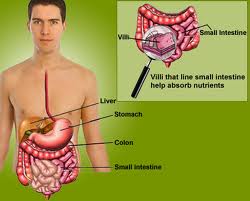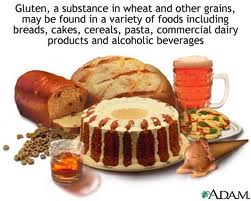Gluten: Learning What’s Safe & Unsafe to Eat
Gluten: Learning What’s Safe & Unsafe to Eat
~
Once you digest that you’ll be avoiding gluten, you have to begin by learning what things contain gluten, and what things don’t. You’ll have to teach yourself how to know and understand that even cross contamination of gluten free, and food that has gluten in it can still seriously affect you. This is the point where many people decide if they’ll try out these new “gluten free” labeled pre-made products, or if they’ll go the more “clean eating” route, sticking with natural foods. Regardless of your choice, make sure that you’re still feeding your body in the most appropriate way- with proteins, fruits, vegetables, low fats… and treat yourself occasionally. Yes, there are indeed gluten free desserts out there. The list is rather long, but it is very important and informational!
Avoiding WHEAT bases, including:
White Flour
Whole Wheat Flour
Durum Wheat
Graham Flour
Triticale
Kamut
Semolina
Spelt
Wheat Germ
Wheat Bran
Some foods that are made with gluten, but that are also available in your local grocery as a “gluten free“ item are:
Pasta
Couscous
Bread
Flour Tortillas
Cookies
Cakes
Muffins
Pastries
Cereal
Crackers
Beer
Oats
Gravy
Dressings
Sauces
There are also these “tricky” items that can be misleading. This is where having a knowledge base and being able to read labels will help out immensely. Here are some of the “tricky” items, and some may be a surprise to you.
-broth in soups and bouillon cubes
-breadcrumbs and croutons
-fried foods
-imitation fish
-lunch meats and hot dogs
-matzo
-most chips and candy
-salad dressings
-self-basting turkey
-soy sauce
-rice and pasta mixes
What’s all the fuss about oats?
Oats fall into a whole other category. Most people with Celiac’s disease are advised to stay away from oat products, as well, because they are often made in the same plants as wheat based products. Thusly creating cross contamination, and adding wheat into “gluten free” products.
However, now research has shown that pure uncontaminated oats are okay to eat in small portions. Adding oats in your diet adds fiber and other important nutrients. Still, listen to your body. You should not have more than ½ cup of gluten free oats per day. If your body reacts to oats in that amount, simply lower your portion, or stop eating the oats.
A few minor notes..
There are always a few side points when it comes to gluten. Remember that companies are always changing ingredients–especially preservatives. So, if you’re eating gluten free pre-mades, never stop label checking. One week you may have a rice based noodle, and the next week you buy the same thing, but they have added a wheat based preservative. Many of the most commonly used additives are wheat, barely, and rye based.
Just because something is labeled to be “wheat free,” does NOT mean that it is “gluten free.” While WHEAT may be missing from the product, many times it may still contain barely and/or rye.
Even though this may sound silly, if there is ever any question about a product…call or email the manufacturer. These days most big businesses even have a Facebook page, and it’s easier than ever to inbox your complaints, questions, and more.
Resources Used:
Diabetes.org








